
Cyborg (1973) by Klaus Schulze.
More German music design. Once you start delving into the music produced in Germany between 1969 and 1975 you eventually notice that a) the good albums generally have decent cover designs, and b) there are many justly forgotten albums with astonishingly tasteless artwork. Most of the well-known names were smart enough to craft a visual identity: Kraftwerk’s efforts have been explored here recently but there was also the Gothic Surrealism of Falk-U Rogner’s photo montages for Amon Düül II (worthy of a post in themselves); Neu! followed the lead of Kraftwerk with strikingly minimal presentation; Faust’s debut album was released on transparent vinyl in a clear sleeve while their second album was an all-black sleeve with a series of strange pictures inside, one for each song. Can are a notable exception in having no clear identity.
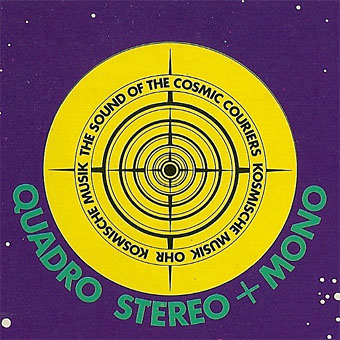
Peter Geitner is unique in this scene in being the only graphic designer you can find who was creating any kind of consistent identity for a label and a group of artists. Almost all the work here is for Rolf-Ulrich Kaiser’s short-lived Kosmische Musik which replaced the earlier Die Kosmischen Kuriere. Both labels were offshoots of Ohr Records (Tangerine Dream’s original home), and catered mostly to the musicians based in Berlin, with a later detour to Switzerland. All the releases feature Geitner’s recurrent motifs of radiating stars and sunburst graphics. I think one of the reasons I like Geitner’s design is because I have a tendency to use similar spiky sunbursts in my own work. Whatever Geitner did after the collapse of Kosmische Musik I’ve yet to discover.
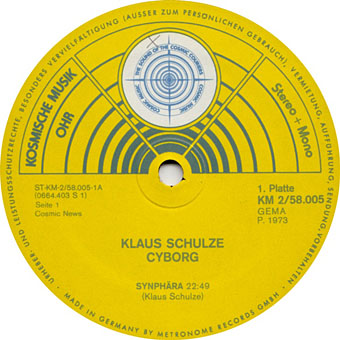
The standard design for the vinyl labels. Many of the albums were released as quadrophonic mixes so the star logo also signifies multi-directional sound. Klaus Schulze’s album is nothing if not cosmic, four sides of treated strings and swirling synth noise.
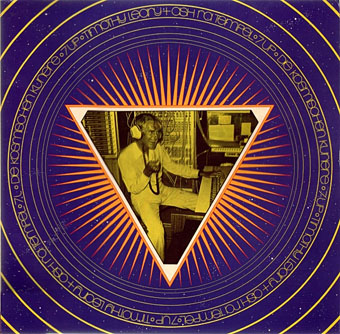
Seven Up (1973) by Timothy Leary & Ash Ra Tempel.
This is a reissue design that replaces the more common sleeve with its Walter Wegmüller doodles and poor layout. I didn’t used to like the music very much either, two sides of bluesy jams with Tim Leary and cohorts bellowing over the top. But it’s a historical oddity, a rare connection between the US psychedelic scene and the German music which took psychedelia in new directions.
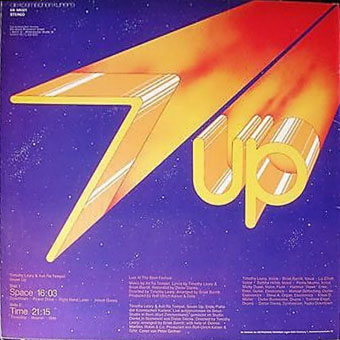
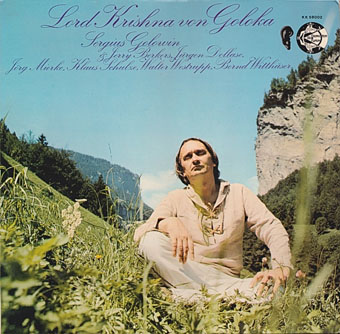
Lord Krishna Von Goloka (1973) by Sergius Golowin.
Not a typical design but included here so I can note another stray connection, this time between the Germans and (in absentia) HR Giger. Sergius Golowin was a well-known Swiss writer and a friend of Giger’s, as was Walter Wegmüller; all three, including “maler Giger”, are referred to in the narration on Gilles Zeitschiff (see below). I still don’t know what Golowin is musing about on this album but it’s a spacey opus.
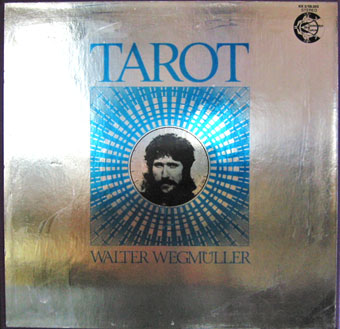
Tarot (1973) by Walter Wegmüller.
And speaking of Wegmuller, Tarot was Rolf-Ulrich Kaiser’s finest moment, a double-album concept based on the Major Arcana of the Tarot, and featuring a Kosmische supergroup with members of Ash Ra Tempel and Wallenstein plus Klaus Schulze, Walter Westrupp and others. The original release was in a purple box with a metallic cover and the inserts below. The box also included a sheet printed with Wegmüller’s Tarot trumps. I have a later CD reissue which came in a smaller box containing a complete deck of Wegmüller’s cards.
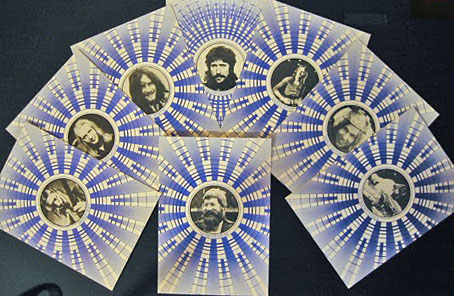
The Cosmic Jokers was a fantasy group created in the studio by Rolf-Ulrich Kaiser to release a succession of remixed and re-edited jams by Ash Ra Tempel and co. without the permission of the musicians. Given the rancour this caused (which eventually sank the label) and the often haphazard nature of the albums I tend to think of these releases as The Cosmic Ripoffs. The Cosmic Couriers poster was free with copies of Gilles Zeitschif and shows label bosses RUK and partner Gille Lettmann as the sun in the firmament of their exploited musicians.
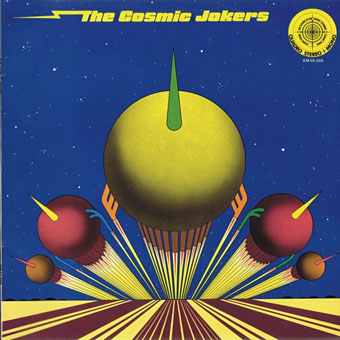
The Cosmic Jokers (1974) by The Cosmic Jokers.
That said, the first album isn’t half bad if you like Ash Ra Tempel.
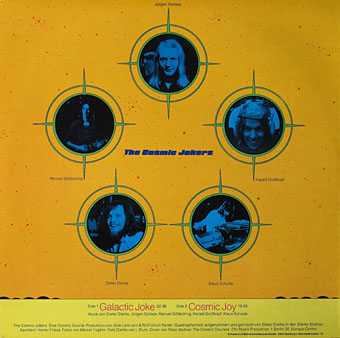
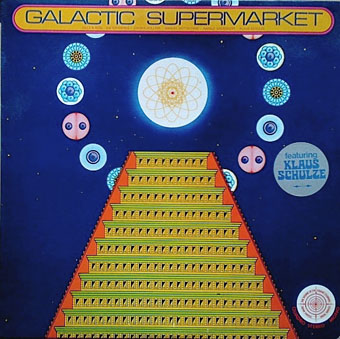
Galactic Supermarket (1974) by The Cosmic Jokers.
The title of this one gives a sense of the creeping bad taste at work but I like Geitner’s pyramid.
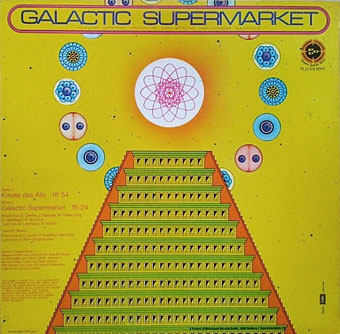
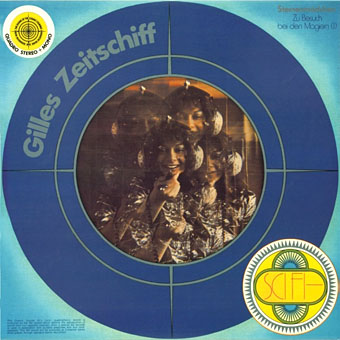
Gilles Zeitschiff (1974) by Sternenmädchen.
Gille Lettmann and others narrate (in English and German) their meeting with Tim Leary. Different mixes exist; on my CD reissue Gille mentions Tangerine Dream being present but Edgar Froese apparently put a stop to this. The album makes a good companion to Seven Up.
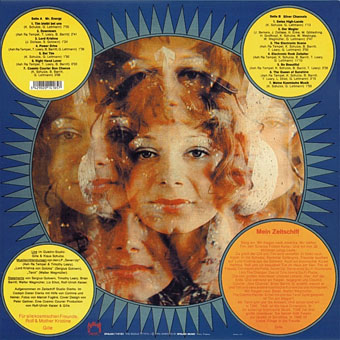
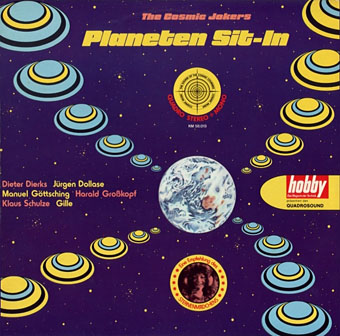
Planeten Sit-In (1974) by The Cosmic Jokers & Sternenmädchen.
Things go off the rails here, this is a very uneven collection, as is the album below, both of them reworking pieces from earlier Kosmische releases.
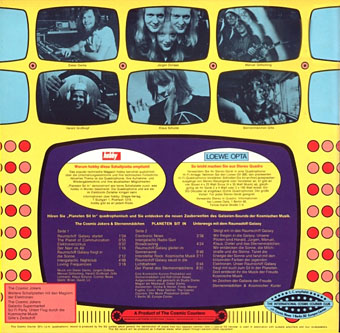
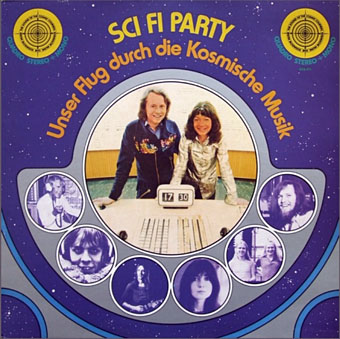
Sci Fi Party (1974) by Various Artists.
Compilation album as label-boss vanity project.
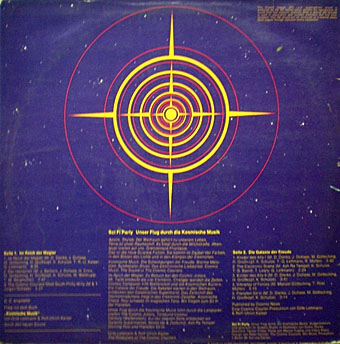
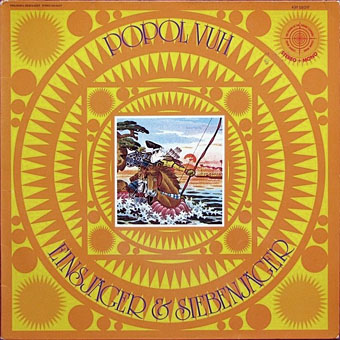
Einsjäger & Siebenjäger (1975) by Popol Vuh.
These Popol Vuh albums are a world away from the cosmic shenanigans, and this is one of Geitner’s best designs. A shame he didn’t get to do more for this fantastic group.

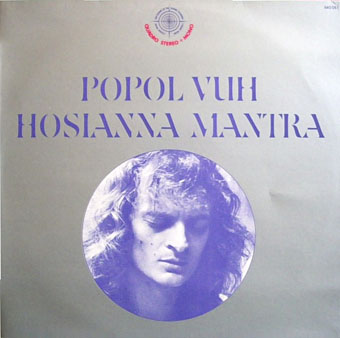
Hosianna Mantra (1975) by Popol Vuh.
A reissue of the 1973 release, I prefer this metallic sleeve design to the original. One of the finest works in the Popol Vuh discography, and one of my favourite albums of all. If you’ve not heard it, you’re missing out.
Elsewhere on { feuilleton }
• The album covers archive

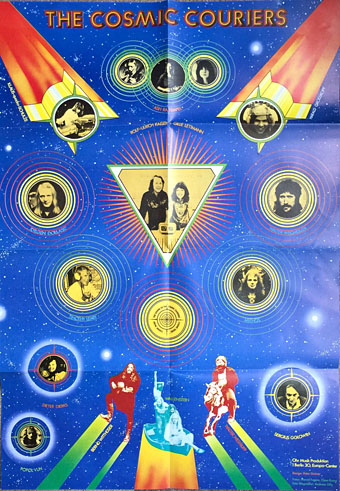
Hi John
I don’t know if you’ve gone into this but there was a Geitner Major Arcana tarot set that came out in the 70’s about the same time as the Wegmuller album. I’ve seen it for sale for upwards of £200.
Damn, that’s something I’ve not seen before! Rolf and Gille had quite a Tarot obsession going on at the time, I posted a photo of Gille in happier days with a deck of Fergus Hall’s cards:
http://www.johncoulthart.com/feuilleton/2013/03/30/tarotism-and-fergus-hall/
A quick look on Abe is enough to convince me to search for more of these. It’s nice to have a deck of Wegmüller’s cards with the album reissue but I really don’t like his drawings. A complete set of Geitner cards would have been much better. Thanks for the tip!
Hi John
I found this which has some examples of the Geitner tarot
http://www.aeclectic.net/tarot/cards/sternenmadchen/
Jeff
Ha, I’d already been there and hoovered those up. There’s more of the cards scattered around but nobody is showing the full set. No matter, there’s enough for a post.
I’m still surprised I’ve not seen these mentioned more as Kosmische Musik/Krautrock spinoffs, especially when the card for The Lovers was used as the cover art for the Dreamlab album by Mythos. There’s some discussion along these lines at Julian Cope’s site but elsewhere the attention is all from Tarot collectors.
Interesting to read that Robert Fripp bought some of Geitner’s work. I’ve had the Dreamlab album for a while but hadn’t realised until reading your posts this week that the cover art was by Geitner. Any idea what happened to him?
The Freeman brothers’ big book of Krautrock describes Geitner as an advertising artist but they don’t say what became of him after the Kosmische Musik label folded. He doesn’t have many other credits on Discogs outside this sphere so he might have left the music business altogether. Or, according to the Eurock site, ended up in an asylum:
http://www.eurock.com/Display.aspx?Content=rukaiser.aspx
Not so far-fetched given the amount of drugs everyone was doing at the time but Geitner at least couldn’t have been too drugged-out given the amount of very precise artwork he was producing. There’s another lengthy account of the Kaiser’s rise and fall which includes one of Gille’s cosmic fashion designs:
http://janreetze.blogspot.co.uk/search/label/Rolf-Ulrich%20Kaiser
This lends credence to the mention I’ve seen that she had a hand in the Tarot designs.